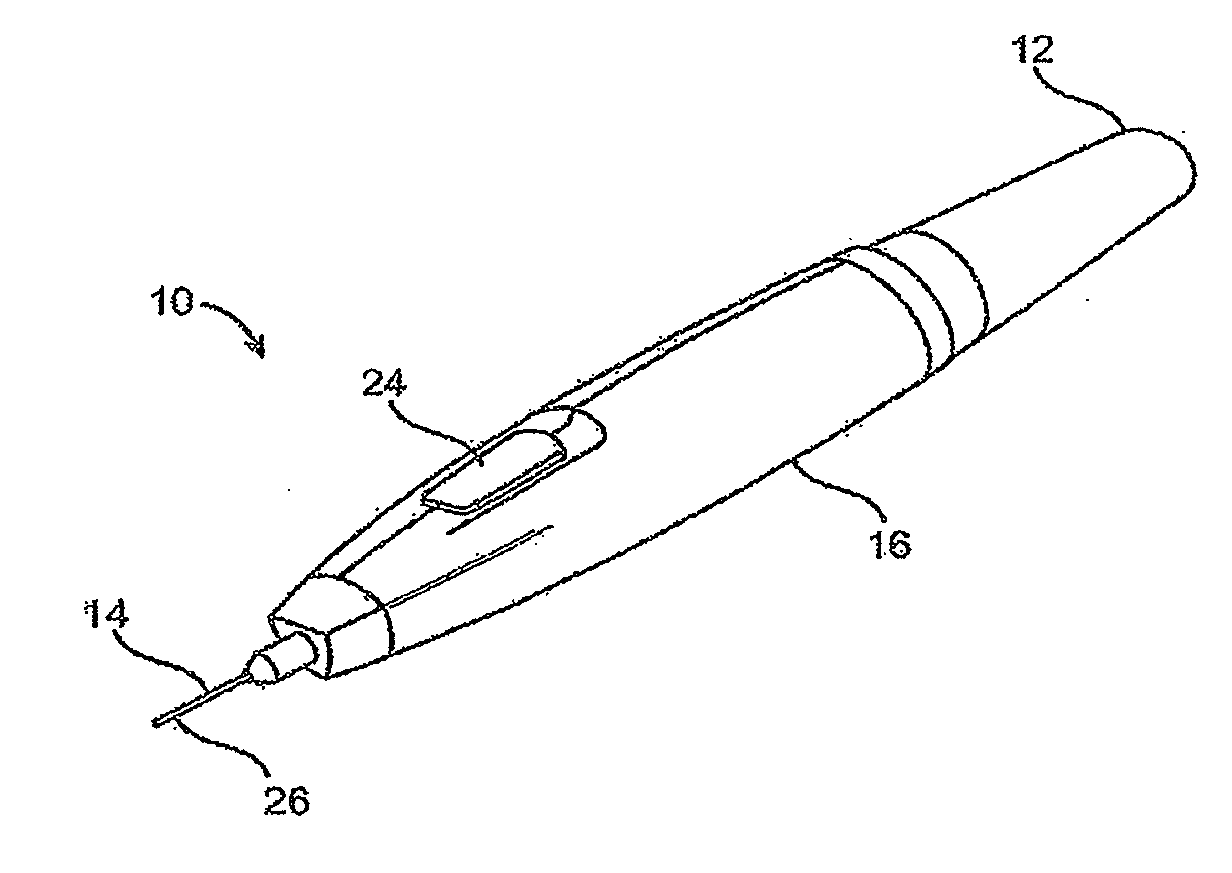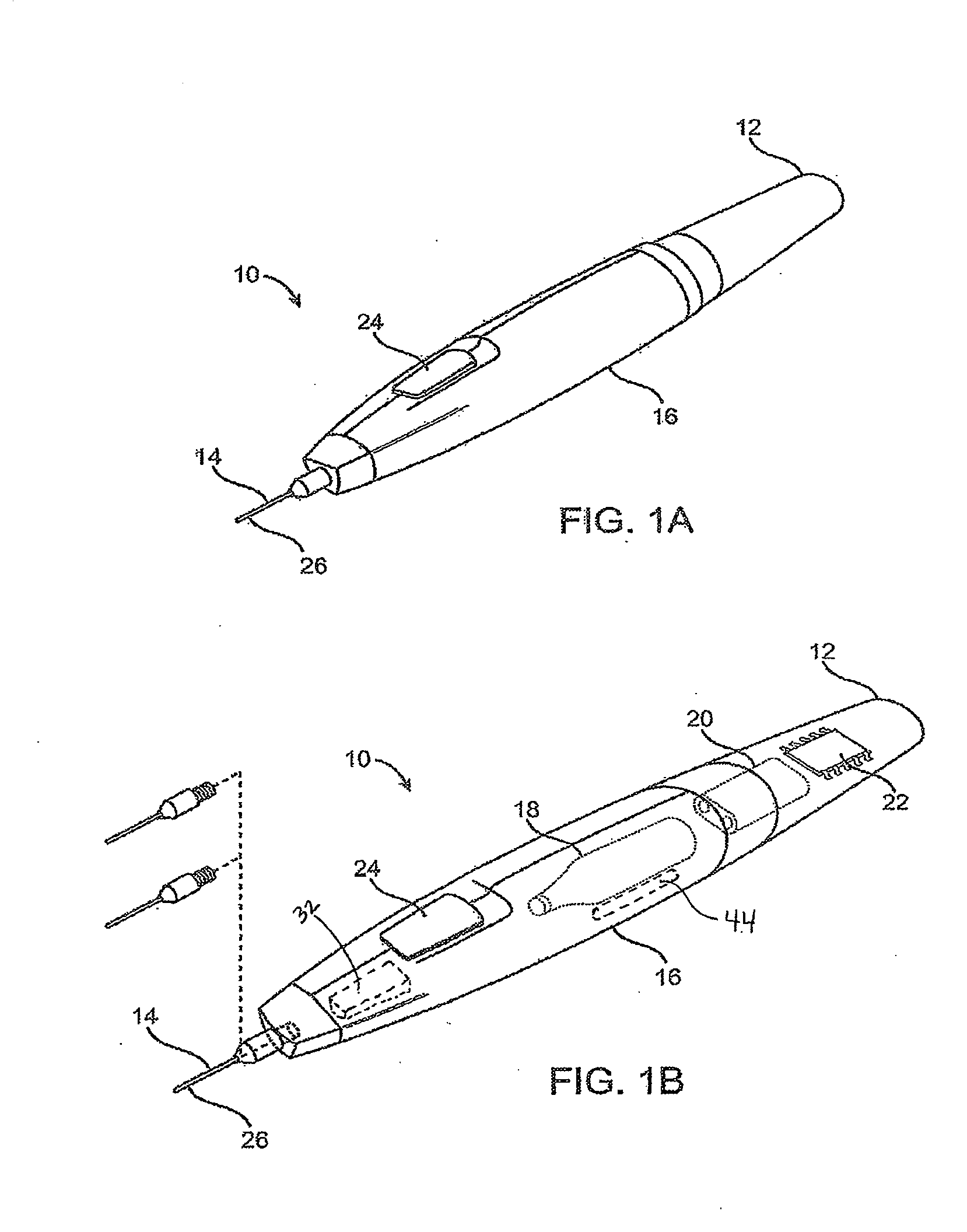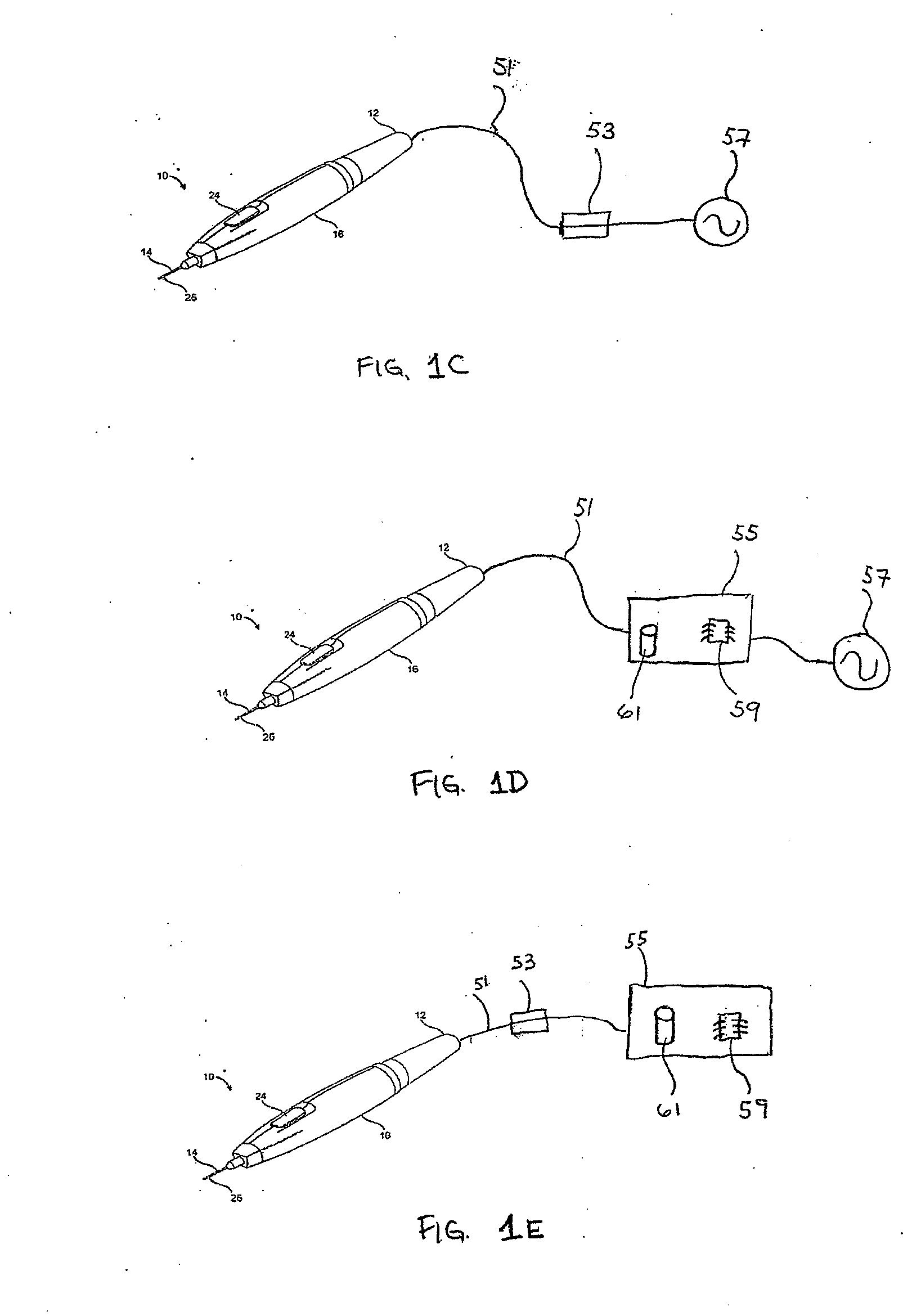Integrated cryosurgical system with refrigerant and electrical power source
- Summary
- Abstract
- Description
- Claims
- Application Information
AI Technical Summary
Benefits of technology
Problems solved by technology
Method used
Image
Examples
experiment 1
[0042] Testing of the system illustrated in FIG. 1 helps determine upper limits to battery capacity. For example, a system having a 4.8 volt 350 mAh nickel metal hydride battery was used to heat an 8 gram nitrous oxide canister with a 4Ω resistive heater element and a manual valve. The battery was fully charged and allowed to continuously heat the canister for 1050 seconds until depleted. Canister temperature was monitored and it reached a maximum of 81° C. without canister rupture. Therefore, it is apparent that a 4.8 volt 350 mAh battery has insufficient capacity to heat and burst an 8 gram nitrous oxide canister and furthermore, 81° C. is not hot enough to burst this type of canister.
experiment 2
[0043] A 10 volt DC power supply was substituted for the battery described above in Experiment 1. Power was continuously supplied to the canister and temperature was monitored until the canister ruptured. A first canister ruptured at 161° C. and a second canister ruptured at 138° C. The second canister ruptured after 1250 seconds of heating. Therefore, the canister should not be heated above approximately 138° C. and more preferably less than a lower temperature in order to allow for some margin of safety. A larger sample size (here, n=2) is required in order to obtain a statistically significant burst temperature. Furthermore, the burst temperature may vary depending on manufacturing lot of the canister as well as based on the manufacturer. An upper burst temperature limit could be determined by testing a statistically significant number of canisters and factoring in a safety margin. In an exemplary method, the cylinder would not be heated to within 80% of its burst temperature.
[00...
PUM
 Login to View More
Login to View More Abstract
Description
Claims
Application Information
 Login to View More
Login to View More - R&D
- Intellectual Property
- Life Sciences
- Materials
- Tech Scout
- Unparalleled Data Quality
- Higher Quality Content
- 60% Fewer Hallucinations
Browse by: Latest US Patents, China's latest patents, Technical Efficacy Thesaurus, Application Domain, Technology Topic, Popular Technical Reports.
© 2025 PatSnap. All rights reserved.Legal|Privacy policy|Modern Slavery Act Transparency Statement|Sitemap|About US| Contact US: help@patsnap.com



